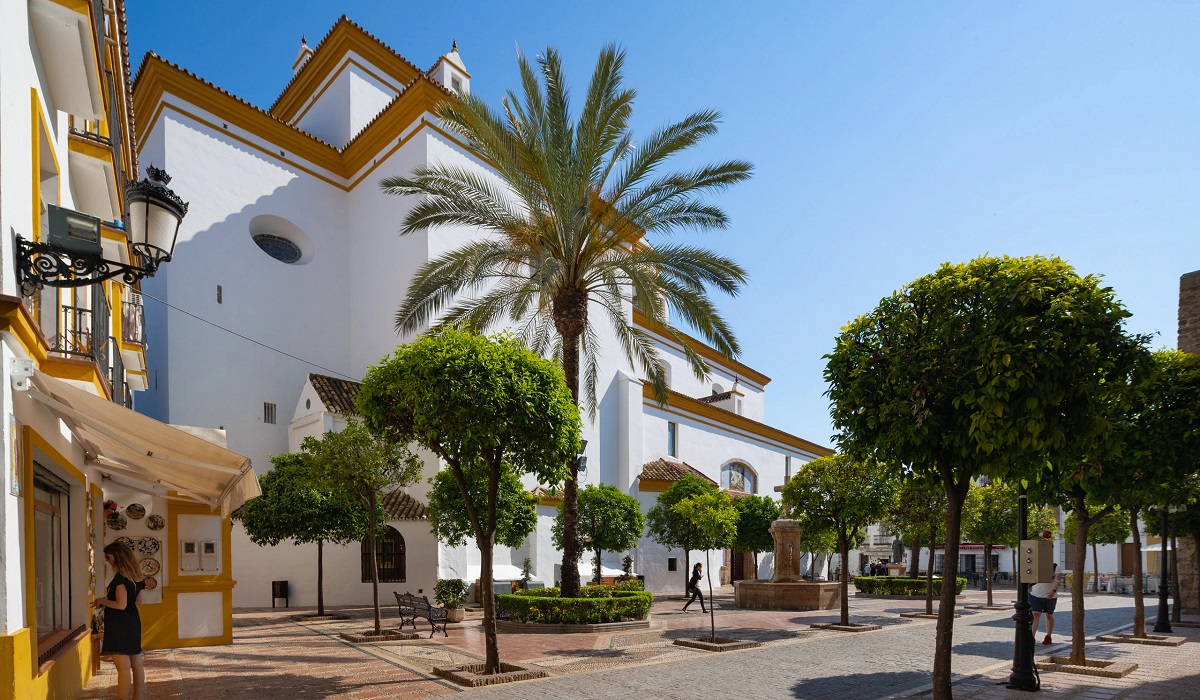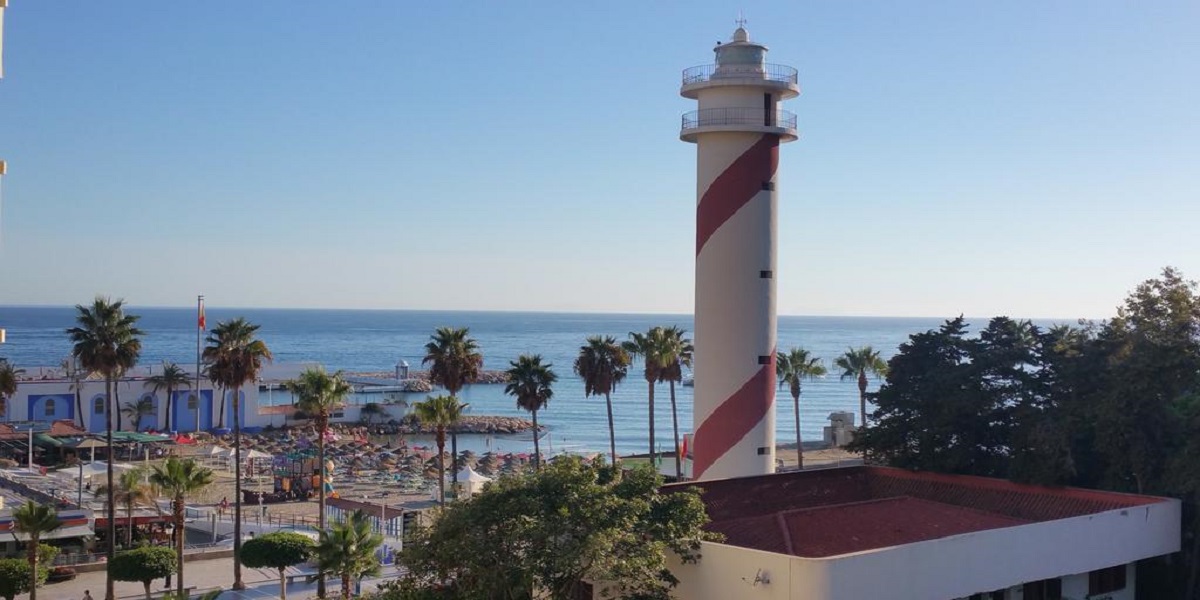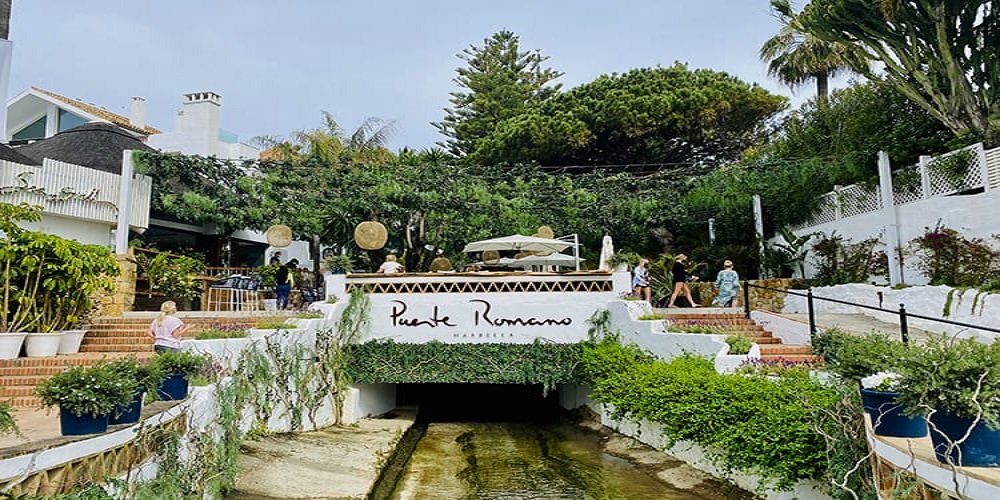Marbella Landmarks.
Marbella, nestled on the sun-drenched Costa del Sol, is adorned with landmarks that encapsulate its rich history and vibrant culture. The iconic Orange Square, or Plaza de los Naranjos, lies at the heart of the Old Town, surrounded by charming whitewashed buildings, cafes, and boutiques. The Moorish-influenced Marbella Old Town Walls, dating back to the 16th century, exude historic charm and offer stunning views of the Mediterranean. The elegant Marbella Marina, Puerto Banús, is a playground for luxury yachts and high-end boutiques, attracting jet-setters worldwide. La Concha, the majestic mountain that serves as a backdrop, is a natural landmark offering panoramic views of the entire region. Marbella’s landmarks, blending ancient allure with modern elegance, contribute to the city’s timeless appeal and make it a captivating destination for visitors and locals alike.
There are numerous sights and landmarks of Marbella.
The Costa del Sol features a number of luxury real estate developments, top golf courses, and a wide range of leisure and shopping options, but Marbella also has a surprising number of iconic buildings. Discover Marbella’s impressive architectural wonders, famous tourist attractions, and hidden gems. Our top ten list features each landmark’s location, history, and nearby properties.
Marbella is a beautiful part of Spain, which we would like to share through our suggested architecture and landmarks. Don’t miss out – see how many you already know! The most important sights are:
The Piruli, also known as the Cooper Tower in Marbella
The delightful copper tower that means the crossing point between the prestigious Golden Mile and Marbella’s clamouring focal lane, Avenida Ricardo Soriano, is a recognizable sight to those who dwell in or continue the region. Be that as it may, regardless of its expected appearance in the day-to-day routines of many, very little is regularly had some significant awareness of this enchanting milestone.
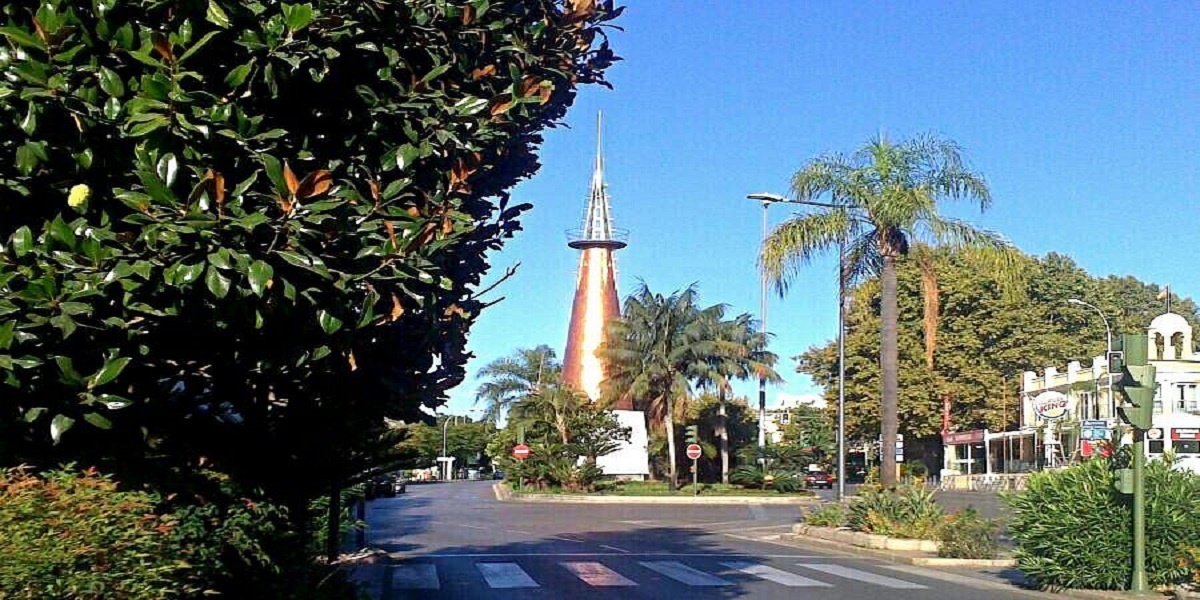
Although its actual address is Plaza de Monsenor Rodrigo Bocanegra, anyone familiar with the region will recognize it as being past the Palacio de Congresos convention facility and at the entrance of Marbella town. This prominent feature successfully separates the Golden Mile from Ricardo Soriano, isolating the opulent palm-lined millionaire’s lane from the bustling city centre. This was the primary reason for the tower’s development in the early 1990s.
Barrios and Cepedano, two prominent local architects known for designing some of the most distinctive luxury apartment complexes in Marbella’s neighbouring “hanging gardens” neighbourhood, were chosen to design the city’s most notable monument. One of their notable designs is “La Lavadora,” or “The Washing Machine,” a highly sought-after beachside apartment development located southeast of the Piruli.
Marbella’s shining beacon.
With a touch of Art Deco otherworldliness, the Copper Tower boasts an inspired design combining copper and mechanical elements to create an almost antique futuristic look. This eclectic masterpiece has become a true landmark in Marbella, located at the meeting point of the Golden Mile and Ricardo Soriano. It represents a beacon of architectural style in this elegant city.
The tower is sometimes called ‘The Lantern’ due to the lighthouse-style glass construction at its top. In many ways, it serves as a beacon that guides cars around a large traffic island, delineating different zones of Marbella in the process. It has become one of the iconic landmarks defining this beautiful city’s charm and character.
The town hall in Marbella is located in “Plaza de Los Naranjos” or “Orange Square”.
Located in the heart of Marbella’s Old Town, the town hall was constructed in 1568 and featured well-preserved sundials and commemorative stone inscriptions on its façade. One of the inscriptions dates back to June 1485, when Marbella was recaptured from the Moors. On the left side of the town hall, you can find the Old Governor’s House, which was built in 1552 and still maintains its original stone exterior. Additionally, a stone fountain that was built in 1504 by Marbella’s first Christian mayor can be found in the square.
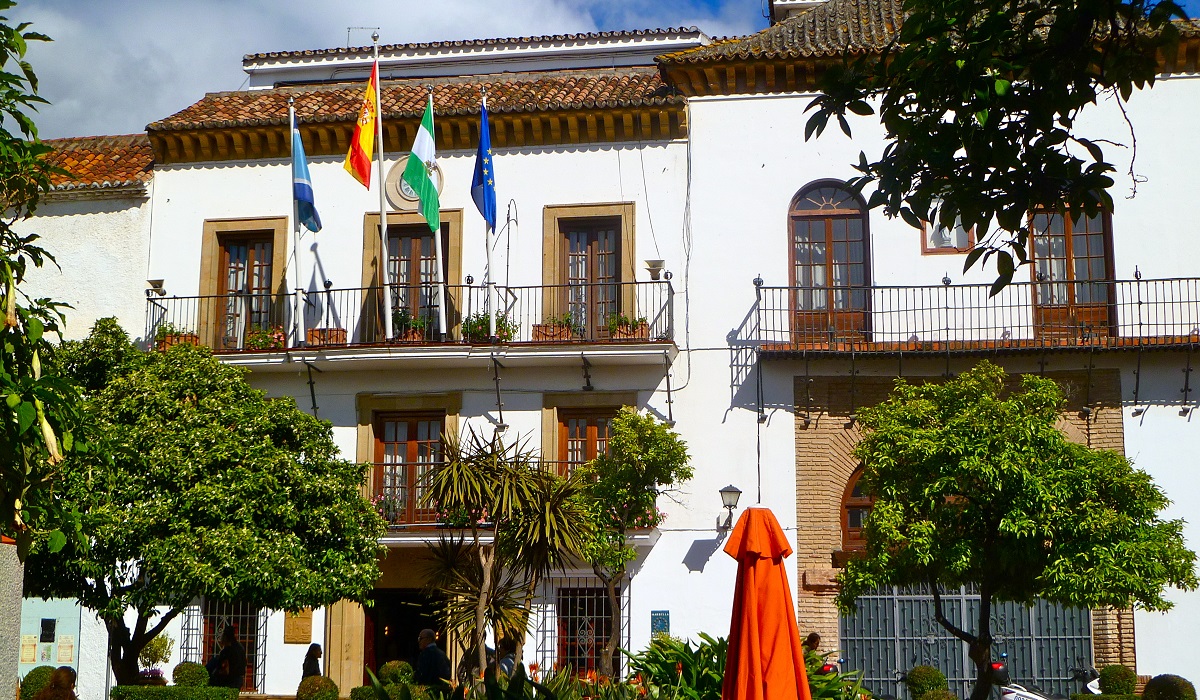
The surrounding area is full of traditional whitewashed houses, many of which have been renovated, with shops and restaurants on the ground level and apartments on the upper floors. Family homes with classic central courtyards have also been handed down through generations.
The “Iglesia de la Encarnación” is Marbella’s principal Church.
Constructed in 1505, this Church is conveniently located within walking distance of the Town Hall in the old town. It played a pivotal role in establishing religious edifices throughout the city, and its bell tower was reportedly built in 1618. This Church is highly sought-after for various religious ceremonies, including weddings, baptisms, burials, and annual celebrations. The neighbouring properties in this area bear a striking resemblance to those surrounding the town hall, and several buildings in the vicinity were constructed along the Roman wall, adding to their historical significance.
“El Faro” Lighthouse in Marbella.
Built-in 1864, the “El Faro” lighthouse stands prominently in the heart of Marbella, situated right on the beach and across from the harbour. The surrounding area features a range of conventional apartment tower blocks, many of which have undergone renovations. With its proximity to the sea and promenade, the lighthouse is surrounded by various conveniences and services just a few steps away.
Situated on the renowned Golden Mile, a hub of sophistication and elegance throughout the ages, the Puente Romano and Marbella Club Hotel have been at the forefront of Marbella’s glamorous scene. These establishments have drawn affluent and celebrated individuals from all corners of the globe since the 1950s; and in the 1970s, Puente Romano Hotel emerged, introducing a plethora of deluxe resort amenities that have blossomed into refined beach clubs, a sumptuous wellness and spa center, exceptional dining options, a private Puente Romano owner’s club, and even the opulent Nobu boutique hotel.
Alfonso Von Hohenlohe was the principal founder of the Marbella Club Hotel.
Back in the 1950s, he acquired the first “Finca” as a family retreat, and little did he know that he would soon become one of the most iconic figures in Marbella. Originally a family villa with guest houses on the beachfront, the Marbella Club Hotel swiftly rose to prominence as one of Southern Europe’s most sought-after vacation destinations. Welcoming VIP guests from all corners of the world and various backgrounds, the hotel offered a unique luxury experience that quickly captivated them.
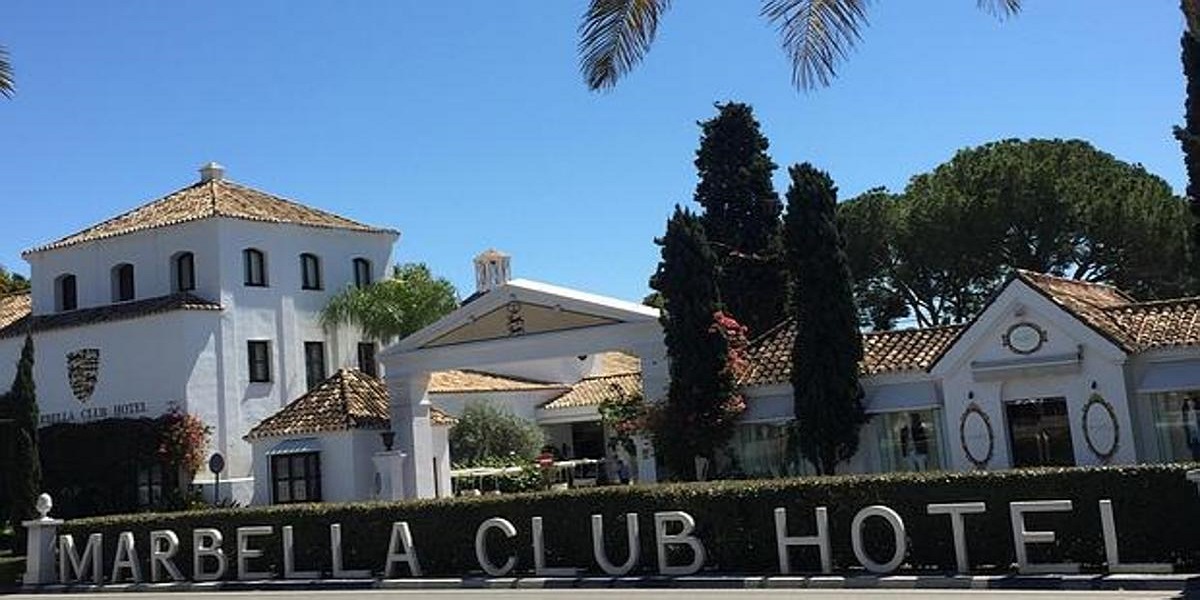
Today, some of Marbella’s most expensive beachfront and beachside houses can be found surrounding the Marbella Club. They range from expansive “Finca-style” family homes to quaint and charming dwellings from the same period, as well as state-of-the-art modern residences designed to meet the demands of today’s fast-paced lifestyle. These properties cater to the diverse needs of every client, ensuring that they find the perfect home for their needs.
Hotel Puente Romano.
In 1974, Alfonso Von Hohenlohe created the Puente Romano Hotel on the beachfront, naming it after the Roman Bridge on the land. Today, many loyal patrons still frequent both hotels regularly. The hotel grounds also encompass a sizeable section of privately-owned residences, a renowned tennis club, and various exceptional restaurants.
The Puente Romano in Marbella is an iconic symbol of Marbella’s rich history and cultural heritage. Dating back to Roman times, this ancient structure has withstood the test of time, serving as a vital link between the past and the present. Situated in one of Marbella’s most picturesque locations, the Puente Romano is more than just a historical artifact; it is a living testament to the ingenuity and craftsmanship of ancient civilizations. Its stone arches span the waters of the Mediterranean Sea, offering breathtaking views and a tangible connection to Marbella’s past. For centuries, locals and visitors have marveled at its beauty and significance, making it a beloved landmark in the city.
Skol Edif – One of the first buildings of its kind in Marbella.
Built-in 1963 as an aparthotel, Skol Edif now comprises three individually owned apartments in the heart of Marbella right on the beach. This impressive building is a remarkable example of the architecture of its era, designed by Manuel Jaen, a renowned architect of the Modern Movement. Skol Edif boasts tropical grounds featuring three swimming pools, each catering to different age groups, including one for adults, one for families, and one for children. The gardens lead out onto the beachside promenade, providing easy access for residents. A receptionist is available round the clock every day of the week.
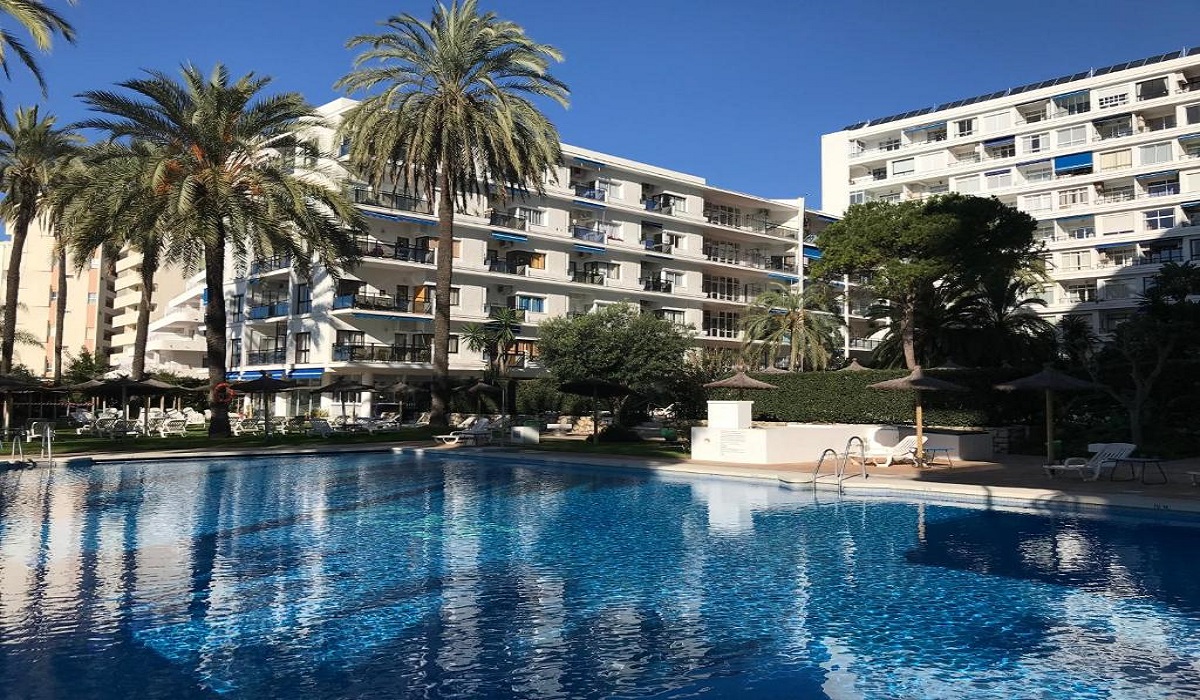
The privately owned properties in Skol Edif have undergone extensive rebuilding and renovation, resulting in contemporary and functional properties with spectacular sea views in a truly unmatched location.
Don Pepe Hotel – An Andalusian-style beachfront hotel.
Located just a stone’s throw away from the beach and promenade, this hotel boasts a highly convenient location with easy access to a wide array of stores, restaurants, and essential amenities. Guests can enjoy a comfortable stay with 319 fully-equipped and bright studio units spread across three buildings. The hotel features a reception area, concierge service, two outdoor swimming pools, charming gardens, paddle and tennis courts, and a delectable Mediterranean restaurant.
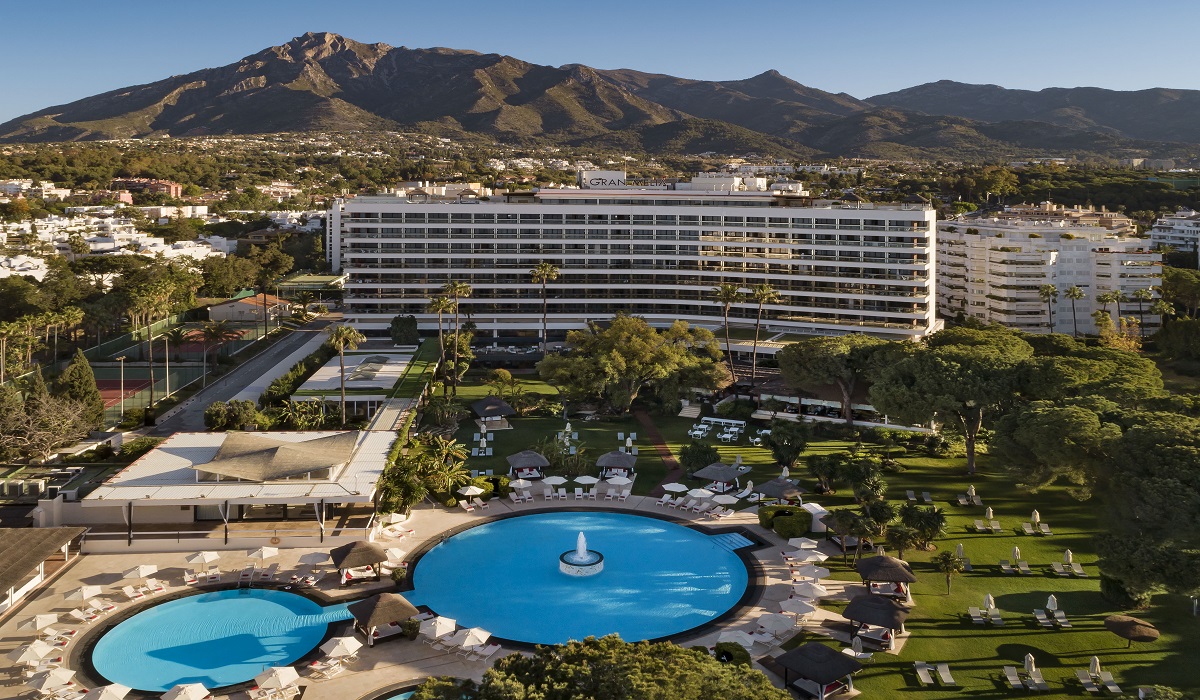
In the surrounding region, apartment buildings by the beach come in varying sizes, ranging from well-proportioned two-bedroom homes to expansive luxury flats and penthouses.
Hotel Don Carlos – A well-known 1970s structure.
Located in Marbella’s Elviria district, this boutique hotel boasts a unique architectural style visible for kilometres. The hotel’s tropical grounds span approximately 20,000m2 and showcase exotic flora. Its 1,600m2 health area and exceptional cuisine have earned it a well-deserved reputation. As one of Andalusia’s pioneers in hosting conventions and incentives for tourism, the hotel’s beach club, now owned by “Nikki Beach,” still holds the unique events that made it famous in the 1970s. In addition to the hotel, the area features a variety of properties, including sophisticated gated beach communities and private luxury villas directly on the beach.
Torre Real – Also spelt Edif. Diana
Located in Rio Real, just east of Marbella, this high-rise tower block was one of the first of its kind and served as a beacon of modern-day residential living from the 1950s to the 1970s. With 20 stories and a basement parking level, it is visible from afar and stands between 15 and 41 meters above sea level. The complex includes tropical gardens, two pools, and a tennis court and is easily accessible to all local amenities. Many properties on this street have been upgraded since the 1970s and offer beautiful sea views from multiple directions and opinions of the golf course and mountains. If you are interested in renting or buying, please get in touch with our office to view available properties. If you want to sell or rent out your property, we can provide valuations and advice on advertising.
La Concha.
One of the most recognizable landmarks of Marbella is La Concha “the seashell”, a Mountain peak belonging to the Sierra Blanca ranga that has an elevation of 1,215 meters (3,986 feet) and offers stunning views of the Mediterranean Sea and surrounding areas. It is also a popular hiking destination.
LuxuryForSale.Properties Real Estate.
At LuxuryForSale.Properties, We love Marbella and its landmarks but understand that buying a luxury property in Marbella can be a complex and stressful process, that’s why we’re here to help. Our company focuses on providing exceptional service to our clients.
If you’re interested in learning more about Marbella luxury real estate, don’t hesitate to contact LuxuryForSale.Properties. We look forward to hearing from you.


